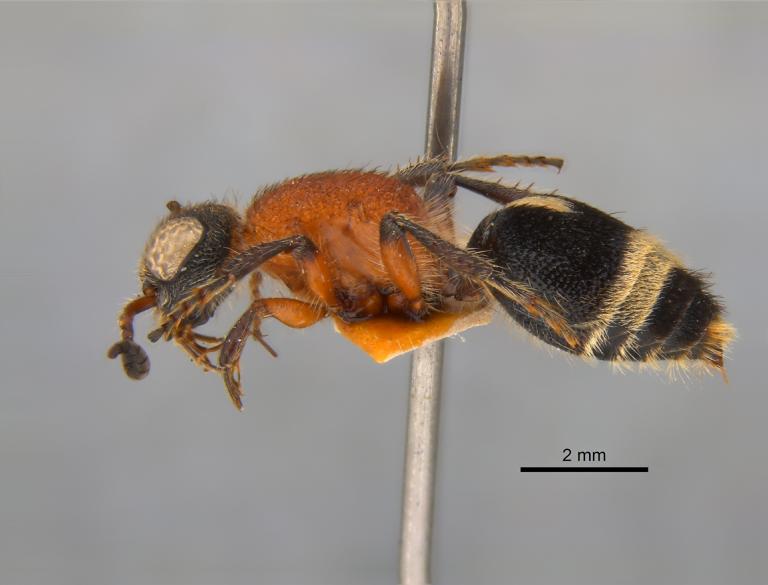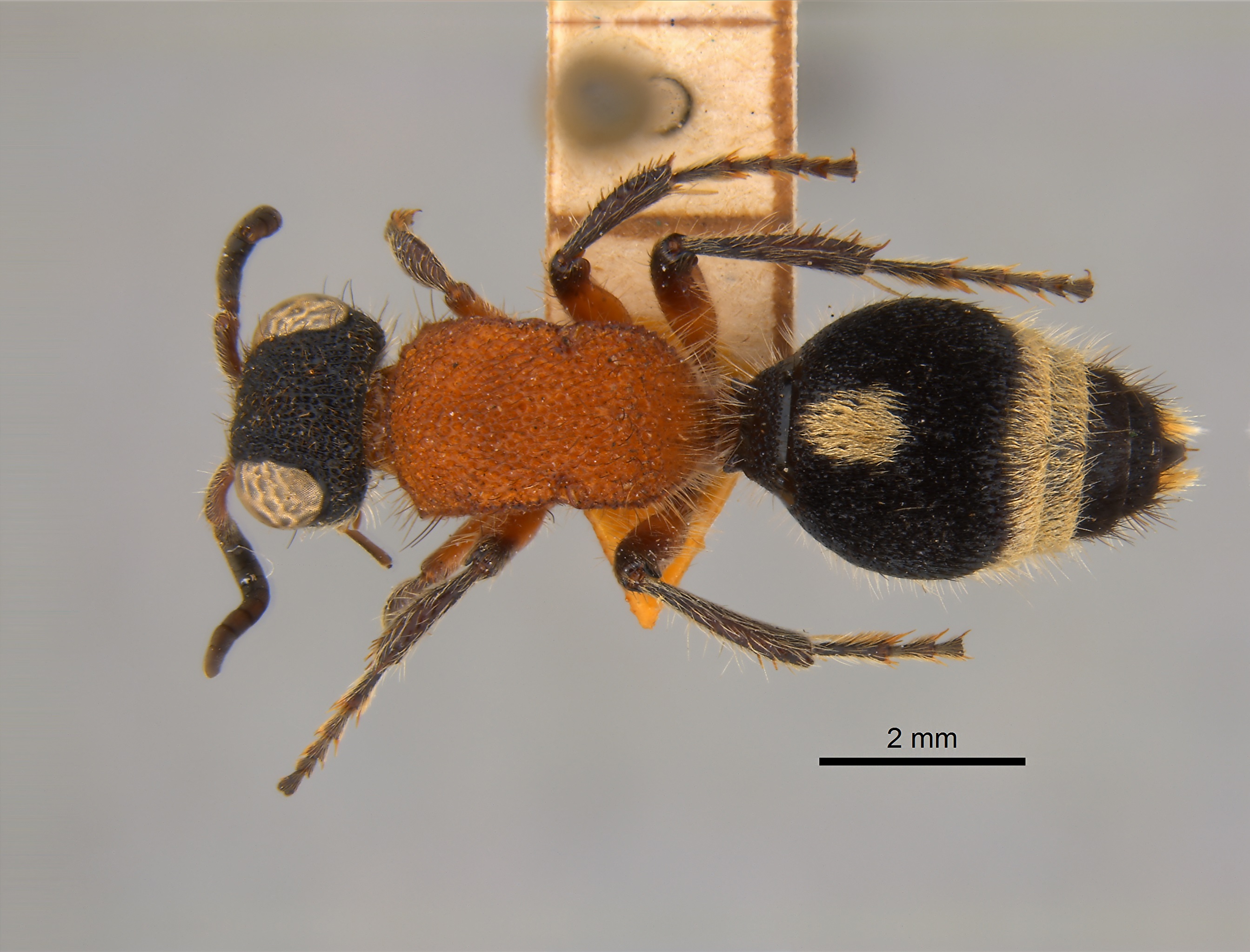
During a study on velvet ants, nine new species have been described. Specimens from the collection of Naturalis Biodiversity Center were used in this study. As a token of appreciation, the scientists have named one of those newly found species after Naturalis.
Ten thousandvelvet ants
Velvet ants (Mutillidae) are insects that look very similar to ants, but are actually wasps. The females are wingless. Velvet ants are a lot hairier than ants, which is why they are nicknamed velvet ants. There are approximately 8000 ant wasp species worldwide, of which only three occur in the Netherlands. In a recent publication in the journal ZooTaxa, scientists from Japan, America, Russia and Vietnam are once again taking a closer look at the female velvet ants of the genus Andreimyrme. They have described nine new species.
To get a good idea of all Andreimyrme species, they collected specimens themselves, and also looked at specimens collected earlier in all kinds of natural history collections, including those from Naturalis. About 10,000 unidentified velvet ants from Naturalis have been loaned to velvet ant expert Kevin Williams for use in multiple studies, including the work on Andreimyrme.
Honoredand delighted
Out of the nine newfound species in this study, three were discovered in the material borrowed from Naturalis. 'And this is only one of the studies that Dr. Williams and his colleagues are doing with our material!', says collection manager Frederique Bakker enthusiastically. 'Specimens from museums such as Naturalis therefore provide an excellent basis for biodiversity research.'
As a token of appreciation, the scientists have named one of those newly found species after Naturalis: Andreimyrme naturalis. 'They have graciously facilitated the study of roughly 10,000 mutillid specimens from around the world by the authors', they write. Naturalis is honored and delighted with this nomination.

This particular velvet ant can be distinguished from related species by its dark antennae and legs. She also has a characteristic fold and a thorn on her thorax. The described specimen was collected in Java in 1931, and the species presumably still exists there. The wasp in question is currently still in California with one of the authors of the ZooTaxa article, but will definitely receive a place of honour in the Naturalis collection when it returns.
Pictures: Kevin Williams.